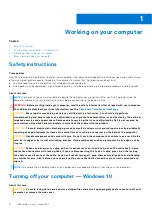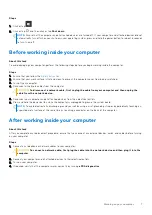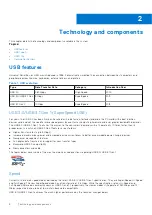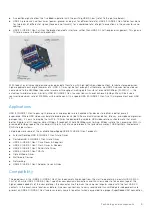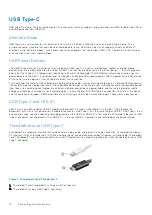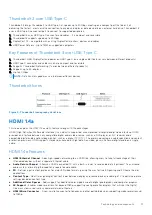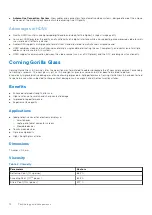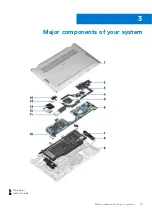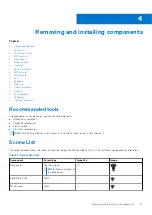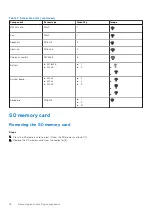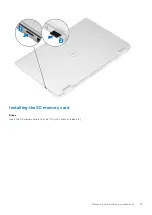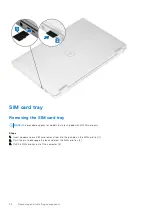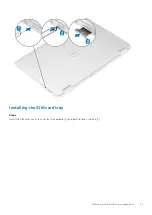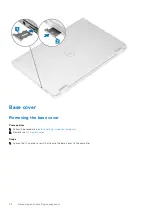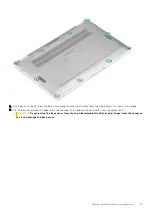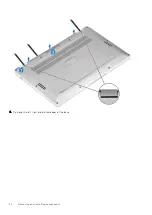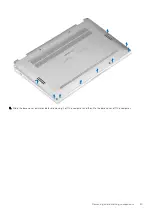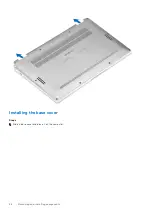
Thunderbolt 3 over USB Type-C
Thunderbolt 3 brings Thunderbolt to USB Type-C at speeds up to 40 Gbps, creating one compact port that does it all -
delivering the fastest, most versatile connection to any dock, display or data device like an external hard drive. Thunderbolt 3
uses a USB Type-C connector/port to connect to supported peripherals.
1. Thunderbolt 3 uses USB Type-C connector and cables - It is compact and reversible
2. Thunderbolt 3 supports speed up to 40 Gbps
3. DisplayPort 1.4 – compatible with existing DisplayPort monitors, devices and cables
4. USB Power Delivery - Up to 130W on supported computers
Key Features of Thunderbolt 3 over USB Type-C
1. Thunderbolt, USB, DisplayPort and power on USB Type-C on a single cable (features vary between different products)
2. USB Type-C connector and cables which are compact and reversible
3. Supports Thunderbolt Networking (*varies between different products)
4. Supports up to 4K displays
5. Up to 40 Gbps
NOTE:
Data transfer speed may vary between different devices.
Thunderbolt Icons
Figure 2. Thunderbolt Iconography Variations
HDMI 1.4a
This topic explains the HDMI 1.4a and its features along with the advantages.
HDMI (High-Definition Multimedia Interface) is an industry-supported, uncompressed, all-digital audio/video interface. HDMI
provides an interface between any compatible digital audio/video source, such as a DVD player, or A/V receiver and a
compatible digital audio and/or video monitor, such as a digital TV (DTV). The primary advantage is cable reduction and content
protection provisions. HDMI supports standard, enhanced, or high-definition video, plus multichannel digital audio on a single
cable.
HDMI 1.4a Features
●
HDMI Ethernet Channel
- Adds high-speed networking to an HDMI link, allowing users to take full advantage of their
IP-enabled devices without a separate Ethernet cable.
●
Audio Return Channel
- Allows an HDMI-connected TV with a built-in tuner to send audio data "upstream" to a surround
audio system, eliminating the need for a separate audio cable.
●
3D
- Defines input/output protocols for major 3D video formats, paving the way for true 3D gaming and 3D home theater
applications.
●
Content Type
- Real-time signaling of content types between display and source devices, enabling a TV to optimize picture
settings based on content type.
●
Additional Color Spaces
- Adds support for additional color models used in digital photography and computer graphics.
●
4K Support
- Enables video resolutions far beyond 1080p, supporting next-generation displays that will rival the Digital
Cinema systems used in many commercial movie theaters.
●
HDMI Micro Connector
- A new, smaller connector for phones and other portable devices, supporting video resolutions up
to 1080p.
Technology and components
11
Summary of Contents for Latitude 7400 2-in-1
Page 24: ...4 Pry along the left right and bottom edges of the base 24 Removing and installing components ...
Page 43: ...5 Place the metal shield on the WWAN card Removing and installing components 43 ...
Page 51: ...8 Adhere the Mylar sheet on the system board Removing and installing components 51 ...
Page 56: ...4 Remove the metal foil from the heatsink shield 56 Removing and installing components ...
Page 57: ...5 Remove the heatsink shield from the system board Removing and installing components 57 ...
Page 60: ...3 Place the heatsink shield on the heatsink 60 Removing and installing components ...
Page 61: ...4 Adhere the metal foils on the heatsink shield Removing and installing components 61 ...
Page 87: ...8 Lift the keyboard off the palmrest assembly Removing and installing components 87 ...






